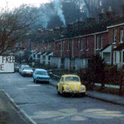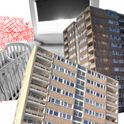One of the simplest yet paralysis-inducing truths of our time is that demand for housing easily outstrips supply in London and has been doing so for a long time.
Population growth, which is expected to add the equivalent of a city at least the size of Birmingham to the capital’s headcount over the next decade, will make this much worse. George Osborne’s plan for a new garden city at Ebbsfleet is certainly welcome— it ticks key boxes for getting homes built quickly, such as transport, infrastructure and the right planning consents. But the 11,000 homes planned are just one part of a much bigger puzzle.
London First’s new report, “Home Truths,” offers 12 practical solutions to London’s housing crisis and, while it’s up to the politicians to decide which of these are the most palatable, there is one that we simply can’t ignore: the building of whole new communities to house tens of thousands of people.
This is an obvious solution in a city whose population is forecast to increase by a further million people by 2021 and where the latest house building figures show that only 18,380 new homes were built in 2012/13.
In recent months the concept of new towns has been promoted more and more vociferously. Deputy Prime Minister Nick Clegg, Labour leader Ed Miliband, the Town and Country Planning Association, Centre for London and Legal & General are among those pinning their hopes on new towns, garden cities, call them what you will (at the moment these concepts tend to be used interchangeably and indiscriminately).
We accept these may be useful elsewhere, but in the context of London this isn’t a helpful idea. For the capital we propose something slightly different: new suburbs.
This may sound like nothing more than semantics, but we make the distinction for three important reasons. First, we want to make clear that this is simply carrying on with the way London has evolved over centuries— all we are doing is giving this evolution a shot in the arm.
Second, the politics: we worry that talk of new towns, however merited, is a sure-fire way of mobilising the vocal anti-development lobby and killing the concept of large new communities stone dead.
Finally, we don’t want new communities that stretch across boundaries, raising questions over exactly what will go where and who is in charge. We want these suburbs to be within the control of London government alone and within the Mayor’s powers—and that includes leveraging Transport for London so we get the transport links (like the mooted Crossrail 2 line) to unlock these new locations.
We have pinpointed Brimsdown in the Upper Lea Valley and Chessington, south of the Royal Borough of Kingston upon Thames, as two areas that could support the creation of significant new communities. One of the chief reasons is the existence of fast and reliable transport infrastructure which has to go hand-in-hand with supporting the development of new living spaces.
Crossrail 2, a new southwest to northeast rail line in London, could not only connect these new communities but also transform commuting times across London and help to reduce pressure on the Underground. This makes for a double whammy of wins for London: more homes and a city that is considerably nicer to get around.
It is also a tried and tested model that helped London expand in the early 20th century. (The Metroland development that happened as the Underground was expanded through northwest London is probably the best-known example, but similar growth was experienced as the Tube extended south and east as well).
This brings us to the elephant in the room—the green belt.
The level of demand for housing and the complexities of bringing brownfield sites forward mean such sites alone may not deliver enough supply sufficiently quickly. The creation of new suburbs on green belt land must therefore be considered.
It is crucial we understand what green belt actually is. Anti-development campaigners have very successfully equated the term in the public’s mind with lush park land, where deer graze serenely and crystal clear streams bisect ancient forests. In some places this caricature is fitting, but in others it couldn’t be further from the truth.
Portions of the green belt are forgotten, unloved scrubland that would be vastly improved by the green spaces that would be central to a well-designed new suburb. We recommend the Mayor of London conducts a strategic review to consider the opportunities for re-designating green belt land within London for residential development.
And, just to be clear to those whose hands are raised in horror, I repeat: we are not talking about concreting over swathes of parkland, merely giving some long-ignored land a healthy dose of TLC.
That TLC will extend to the large numbers of people who find themselves priced out of the capital, a phenomenon that will only get worse as London’s population continues to grow, while London’s ability to cope falters.
Build on the green belt
London must expand to solve the housing crisis
March 27, 2014












